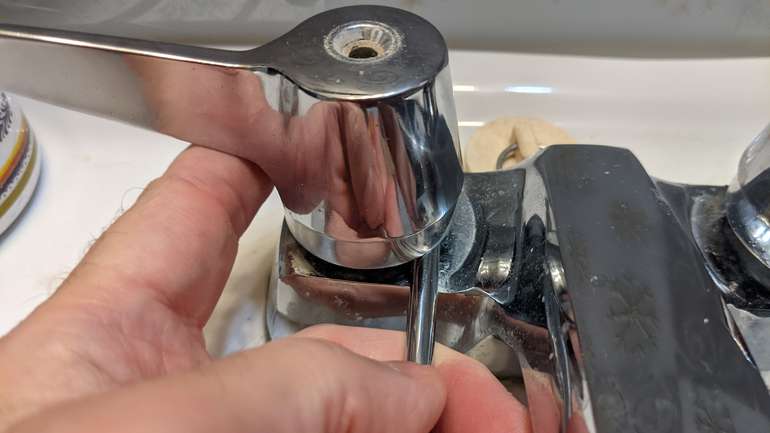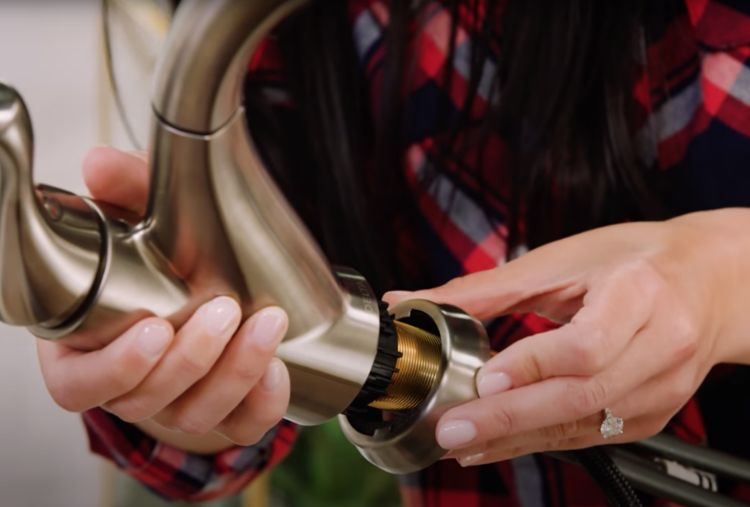What are your thoughts about Leaky Faucets: Why They Happen & What to Do About Them?

Dripping taps could appear like a small trouble, but their impact surpasses just the aggravation of the noise. From drainage to sustaining unnecessary financial prices and wellness risks, disregarding a trickling faucet can result in numerous consequences. In this post, we'll look into why it's essential to resolve this typical home problem promptly and successfully.
Waste of Water
Ecological Impact
Leaking taps add considerably to water wastefulness. According to the Epa (EPA), a single faucet dripping at one drip per secondly can squander more than 3,000 gallons of water each year. This not just pressures water sources but likewise impacts ecosystems and wild animals dependent on them.
Financial Expenses
Enhanced Water Costs
Past the ecological effect, leaking taps can pump up water expenses substantially. The accumulated wastefulness gradually equates right into higher utility expenditures, which might have been stayed clear of with prompt repair work.
Prospective Property Damages
Moreover, extended trickling can lead to harm to components and surfaces surrounding the faucet. Water accumulation can create discoloration, corrosion, and even architectural concerns if left unattended, leading to added repair prices.
Wellness Issues
Mold and Mold Growth
The continuous existence of dampness from a trickling tap produces a suitable setting for mold and mildew development. These fungis not only jeopardize interior air high quality however likewise position wellness threats, especially for individuals with breathing problems or allergies.
Waterborne Illness
Stagnant water in leaking taps can become a breeding place for microorganisms and various other virus, raising the threat of waterborne conditions. Pollutants such as Legionella bacteria flourish in stagnant water, potentially resulting in significant health problems when ingested or breathed in.
DIY vs. Expert Repair service
Pros and Cons of DIY Repair Work
While some might attempt to take care of a dripping tap themselves, DIY repair work feature their own set of difficulties. Without appropriate understanding and devices, DIY attempts can aggravate the problem or cause incomplete repairs, prolonging the problem.
Benefits of Working With a Professional Plumber
Working with an expert plumber guarantees that the underlying root cause of the leaking tap is addressed properly. Plumbing professionals have the competence and devices to detect and repair tap concerns efficiently, saving time and minimizing the threat of additional damages.
Step-by-Step Guide to Dealing With a Dripping Faucet
Devices Required
Before trying to fix a trickling tap, collect the needed tools, consisting of an adjustable wrench, screwdrivers, substitute components (such as washers or cartridges), and plumber's tape.
Usual Faucet Issues and Their Solutions
Identify the sort of tap and the specific problem triggering the drip. Usual problems include damaged washers, rusty valve seats, or damaged O-rings. Refer to manufacturer instructions or on-line tutorials for detailed assistance on repair work.
Safety nets
Regular Maintenance Tips
To avoid dripping faucets, do routine maintenance such as cleaning aerators, checking for leakages, and changing damaged components quickly. In addition, think about setting up water-saving gadgets or updating to more efficient components.
Importance of Prompt Fixes
Addressing trickling taps as soon as they're seen avoids additional water wastefulness and possible damages, inevitably conserving both water and cash in the future.
Impact on Building Worth
Assumption of Well-Maintained Building
Keeping a building in good condition, consisting of attending to maintenance issues like trickling taps, boosts its perceived worth and charm among potential customers or occupants.
Influence on Resale Worth
Residences with well-maintained plumbing components, consisting of faucets, command greater resale values in the realty market. Addressing leaking taps can contribute to a favorable impression during residential or commercial property examinations and negotiations.
Environmental Duty
Private Payment to Preservation
Taking duty for repairing dripping faucets aligns with more comprehensive initiatives toward water conservation and environmental sustainability. Every individual's activities collectively make a substantial effect on preserving priceless resources.
Lasting Living Practices
By prioritizing punctual repair services and adopting water-saving behaviors, people contribute to sustainable living methods that profit both existing and future generations.
Final thought
Dealing with a dripping tap goes beyond mere ease; it's an essential step towards preserving water, minimizing monetary expenses, and guarding health and wellness and property. Whether with do it yourself fixings or professional aid, taking action to take care of leaking taps is a small yet impactful means to promote accountable stewardship of sources and contribute to a healthier, extra sustainable future.
How to Fix a Leaky Faucet: Step-by-Step Repair Guide
A leaky faucet may seem like a simple annoyance, but if it's not fixed promptly, that leak could cost hundreds to potentially thousands. From water damage to mold, mildew, and high water bills, even a tiny leak can be catastrophic if left unattended. Damage like this can even affect the overall value of your home, so it's important to take the right approach for leaky faucet repair. You may need the help of a plumber in some cases, but we've got a few tips you can try on how to fix a leaky faucet before calling the pros.
Four Faucet Types
When you're learning how to fix a leaky faucet, the first step is knowing what kind of faucet you're working with! There are four common types.
Cartridge Faucets
Cartridge faucets come in one- or two-handled varieties. In one-handled cartridge faucets, hot and cold water combines in a single cartridge. In the two-handled versions, hot and cold water are controlled separately and mixed in the faucet.
Ball Faucets
Ball faucets have a single lever you push up and down to adjust the pressure and rotate to change the temperature. A slotted metal ball controls the amount of water allowed into the spout.
Compression Washer Faucets
They're the oldest type of faucet, but they're still used in many homes — especially older ones. Compression faucets have two separate handles that, when turned, raise or lower the washer that seals a water valve. This valve stops water from flowing through the faucet when it is turned off.
Disc Faucets
Disc faucets rarely need to be repaired due to their maintenance-free design. The water flow is controlled by two discs — the upper one raises and lowers against a fixed lower disc, creating a watertight seal. If your disc faucet starts leaking, you may need to replace the seals or clean residue buildup from the inlets.
Fixing a Leaky Faucet
Step 1: Turn Off the Water
Whether you're learning how to fix a leaky bathtub faucet or how to fix a leaky kitchen faucet, always turn off the water supply to your working area when you're fixing a leak. The last thing you want is a flood added to your list of things to fix.
Look for the shutoff valves below your sink or around the tub and turn them clockwise to stop the water flow. If your faucet doesn't have shutoff valves, you may need to turn off the water for the whole house. Check to make sure it's off by turning the faucet on. If nothing comes out, you're ready to start the repair.
Step 2: Take Apart the Faucet
How you disassemble your faucet depends on the type of fixture you have. You can use a flathead screwdriver to remove the caps on top of the handle or handles for cartridge and compression faucets. Inside, you should see handle screws. Unscrew these with a screwdriver to remove the handle.
Disc- and ball-style faucets will typically have an inlet screw near the handle, and removing that will reveal the interior of the faucet.
Detach the Valve Stem
For cartridge- and compression-style faucets, you'll see the inner valve stem or cartridge once you remove the faucet handles. If you have a compression faucet, unscrew the brass valve stem. If you have a cartridge faucet, pull out the cartridge. If your cartridge has been in place for a while, it may require some tools or extra force to remove it due to mineral deposits.
Examine and Replace Parts
Once you've removed the parts, check them out to confirm what needs to be replaced. You may see corroded rubber washers, O-rings, stems, or cartridges. On a ball-style faucet, check the seats and springs for damage.
If you need to repair a leaky disc faucet, check the inlet and seals on the lower disc.
Once you determine what parts must be replaced, visit your local hardware store. Bring the damaged parts with you to ensure you can purchase the correct components to replace them.
Clean Valves and Faucet Cavity
If you've removed a stem or cartridge, you may notice mineral buildup in the faucet's threads. Use white vinegar to clean the valve seat by soaking it for a few minutes, then scrub it away with a soft toothbrush and rinse with warm water. You can also clean the interior of the faucet in the same way.
Reassemble the Faucet
Once your faucet is cleaned and the required parts have been replaced, it's time to reassemble it. Put the pieces back together and slowly turn the water supply back on. Doing this slowly is crucial because too much initial water pressure can damage the new hardware you've just installed.
https://homewarranty.firstam.com/blog/how-to-fix-leaky-faucet

I ran across that blog post about Should I Repair or Replace a Leaky Faucet? when doing a lookup on the search engines. Enjoyed our piece of writing? Please share it. Help somebody else check it out. Kudos for your time. Return soon.